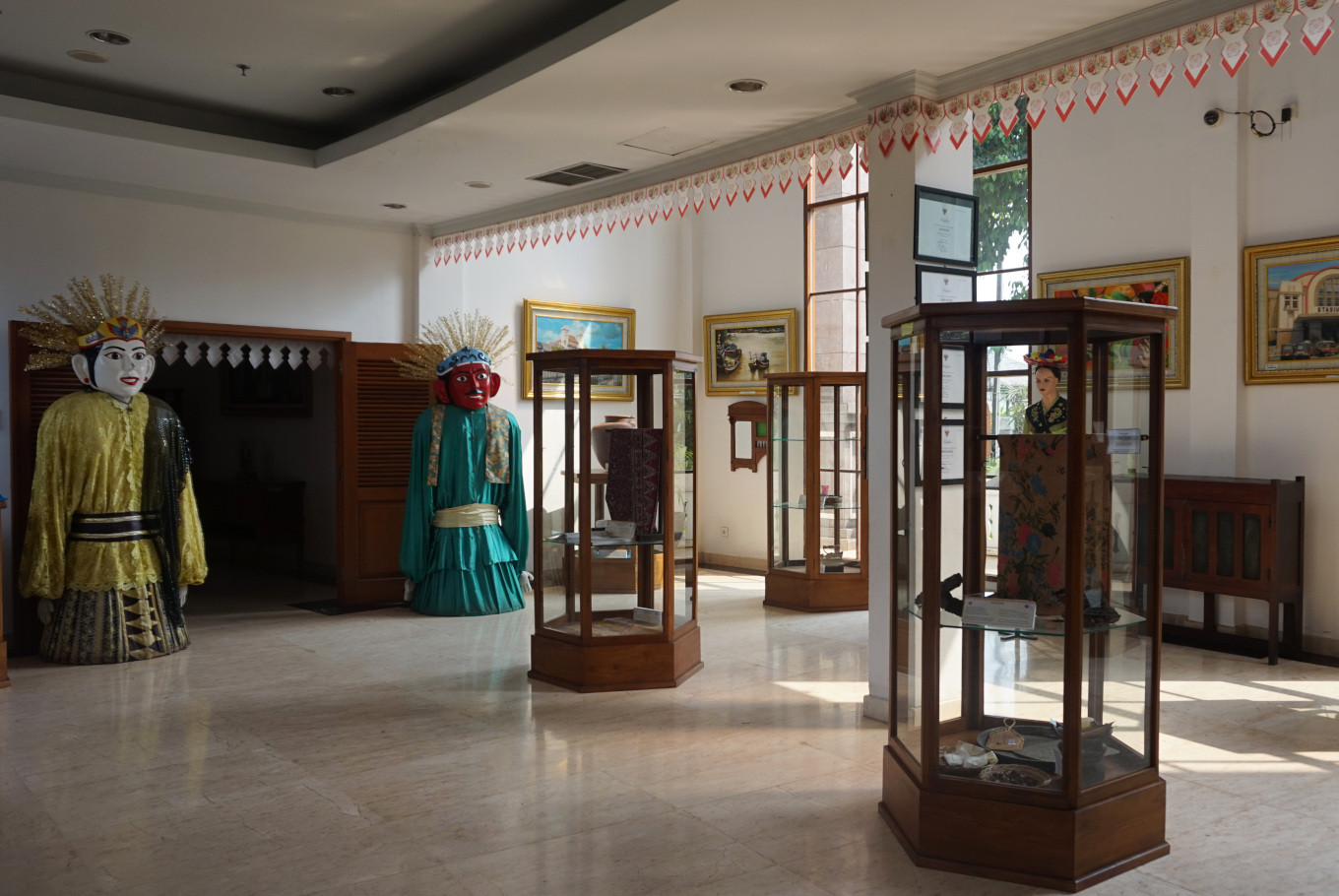Popular Reads
Top Results
Can't find what you're looking for?
View all search resultsPopular Reads
Top Results
Can't find what you're looking for?
View all search resultsThings to do at Setu Babakan Betawi cultural village
From learning about the Betawi culture to sampling traditional dishes, you can do this and more.
Change text size
Gift Premium Articles
to Anyone
W
hat’s the first thing that comes to mind when hearing the word Betawi? Is it ondel-ondel (giant Betawi effigies), kerak telor (traditional Betawi omelet with sticky rice) or even bir pletok (herbs and spices-based beverage)?
No matter which part of Betawi culture pops into your head, you’ll find them all at the Setu Babakan Betawi cultural village in Jagakarsa, South Jakarta. The word setu (lake) is sometimes spelled situ.
The Jakarta Post had the chance to visit the cultural village as part of the Betawi Heritage Tour held by hotel operator Archipelago International. These are some of the activities that you, too, can enjoy at the village:
Learning about the Betawi culture
The 289-hectare cultural village is divided into five zones. The first one, Zone A, consists of a three-story Betawi Museum, amphitheater, traditional houses, workshop areas and other public facilities.
The museum is a must-visit as it displays objects listed on Gubernatorial Decree No. 11/2017 on icons of Betawi culture, including gigi balang (wooden ornament found in traditional Betawi houses), batik, kerak telor and bir pletok.
There’s also an older version of ondel-ondel, which is scarier-looking that the ones we often spot on the streets and was initially used to vanquish negativity.
Other collections on display include traditional cooking tools, kembang goyang (flower-shaped cookies), biji ketapang (cookies shaped like a Ketapang plant, also known as an Indian-almond plant), wedding attire that were inspired by Chinese and Arab cultures, baju sadariah (outfits worn for praying or attending formal ceremonies), a sirajut golok (machete) that weighs 200 kilograms and roti buaya (crocodile-shaped bread presented during a traditional proposal ceremony).
The cultural village’s management plans to introduce a replica of an old Betawi village this year in Zone C and build a school that will teach Betawi culture in Zone D.
Read also: Jakarta to renovate Setu Babakan cultural neighborhood
Workshops
Twelve different workshops can be conducted at the cultural village, from cooking dodol (a fudge-like sweet made of glutinous rice, palm sugar and coconut milk) and kerak telor to making ondel-ondel and bir pletok.
In the ondel-ondel workshop, for instance, visitors will make a small version of the effigies from scratch using simple materials, such as a shuttlecock and fabric, to be decorated with markers. If you’re interested in attending this workshop, contact the museum at +6221 7889 3258 or upkpbbsetubabakan@yahoo.co.id to make an appointment.
A traditional Nandak Ganjen dance class is held every Wednesday afternoon and a traditional martial art silat beksi class is usually held every Sunday evening.
Culinary adventure
A number of Indonesian souvenirs, food, snack and beverage vendors can be found along the way to the village’s Zone E, including those selling gado-gado (slightly boiled vegetables served with peanut sauce), soto daging (Betawi beef soup), es kelapa muda (young coconut drink) and handmade sweets. People usually eat on the floor near Setu Babakan. The area is usually crowded during lunch time and at weekends. (mut)







